Super High Dynamic Range Video
High dynamic range (HDR) imaging is highly demanded in computer vision algorithms. An HDR image is composed with several low dynamic range (LDR) images, which usually have some disparities. Recently, super high dynamic range (SHDR) imaging algorithm has been proposed where the disparities are estimated based on the segment shapes instead of the textures for handling such extreme scenes. We extend the SHDR imaging algorithm to SHDR video generation introducing temporal smoothness terms. The temporal smoothness terms improve the temporal stability and the precision of the disparity estimation.
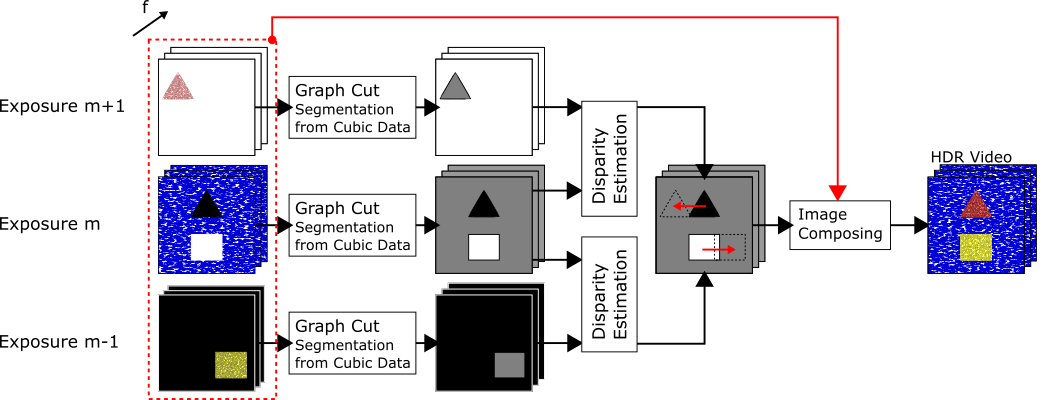 |
This figure shows overviews of our algorithm. SHDR video generation algorithm consists of three steps, i.e. a segmentation step, a segment-based alignment step, and an image composing step. The segmentation step and the segment-based alignment step can be formulated as an optimization problem. We design each cost function with smoothness term between frames. |
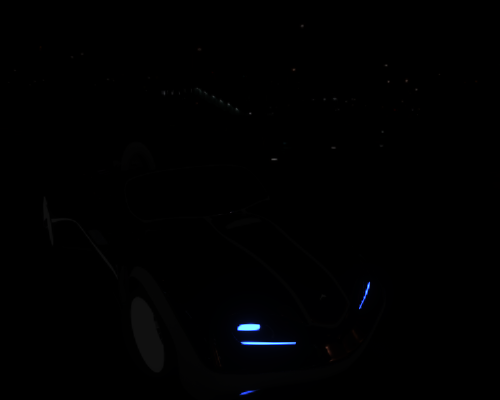 |
 |
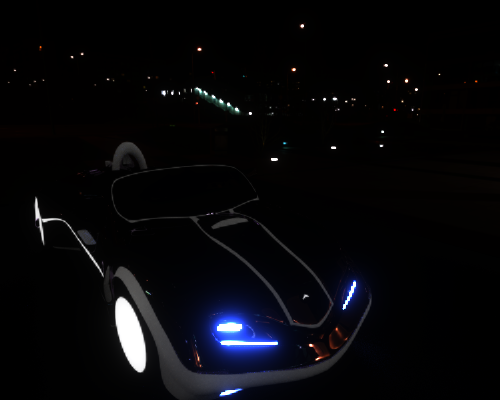 |
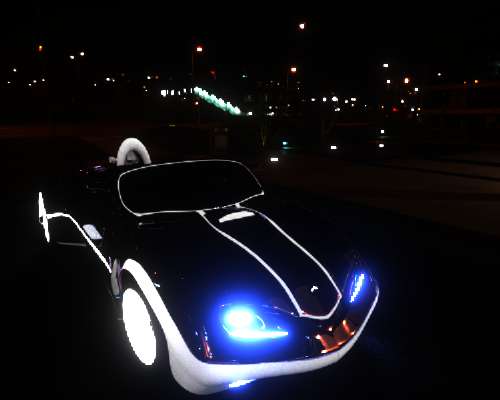 |
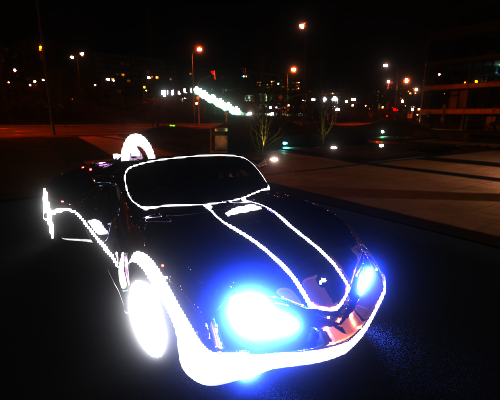 |
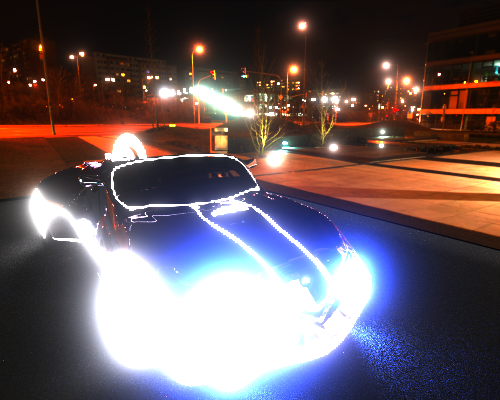 |
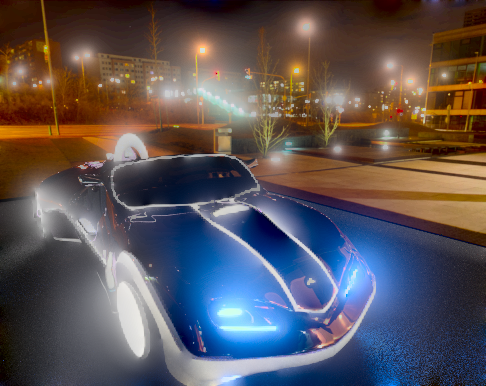 |
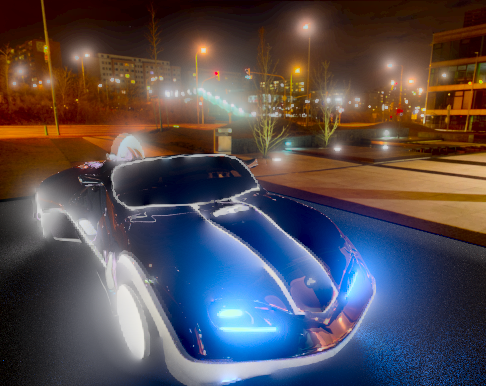 |
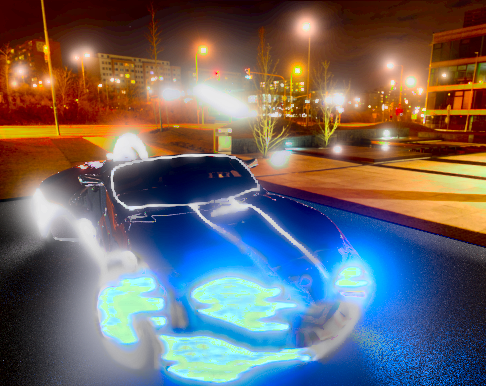 |
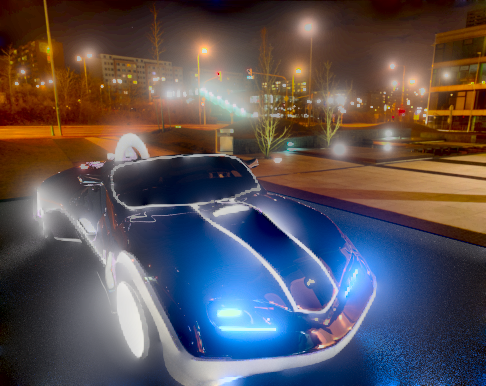 |
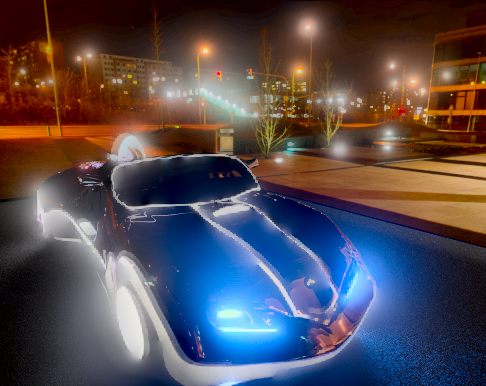 |
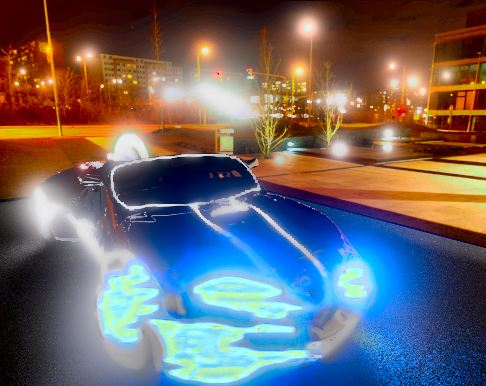 |
| Our result. | Hayami et al.[3] | Sen et al.[2] |
Compared Algorithms
[1] Y. S. Heo, K. M. Lee, S. U. Lee, Y. Moon, and J. Cha, “Ghost-free high dynamic range imaging,” in Computer Vision ACCV 2010. Springer, 2011, pp. 486-500.
[2] P. Sen, N. K. Kalantari, M. Yaesoubi, S. Darabi, D. B. Goldman, and E. Shechtman, “Robust Patch-Based HDR Reconstruction of Dynamic Scenes,” ACM Transactions on Graphics (TOG) (Proceedings of SIGGRAPH Asia 2012), vol. 31, no. 6, pp. 203:1?203:11, 2012.
[3] T. Hayami, M. Tanaka, M. Okutomi, T. Shibata, and S. Senda, “Super
High Dynamic Range Imaging,” the 22nd International Conference on
Pattern Recognition (ICPR) , pp. 720-725, 2014.